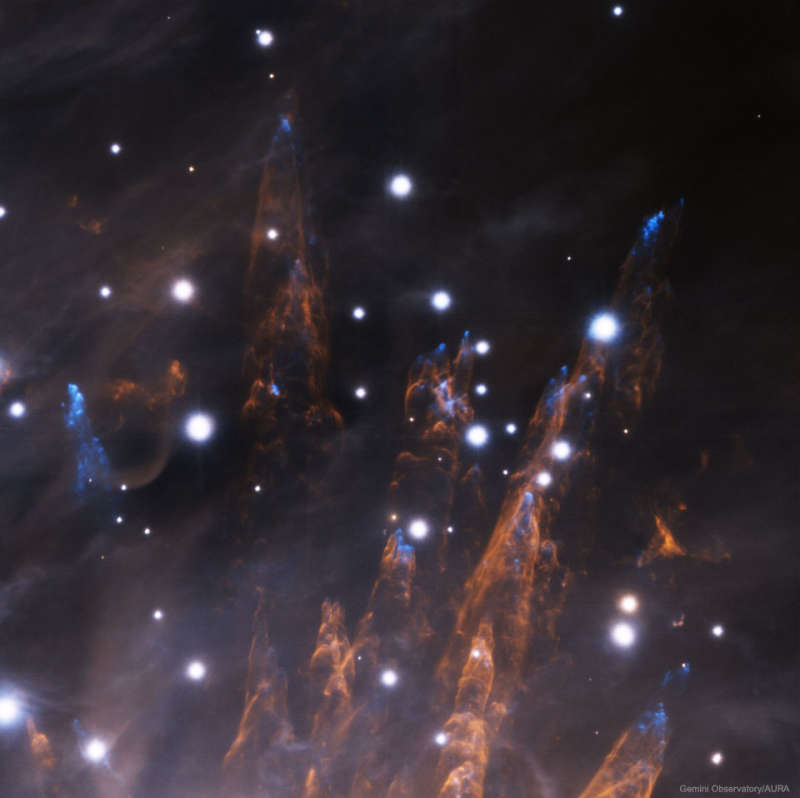Credit & Copyright: GeMS/GSAOI Team,
Gemini Observatory, AURA,
NSF;
Processing: Rodrigo Carrasco (Gemini Obs.), Travis Rector (Univ. Alaska Anchorage)
Explanation:
Why are bullets of gas shooting out of the Orion Nebula?
Nobody is yet sure.
First discovered in 1983, each bullet is actually about the size of
our Solar System, and
moving at about 400 km/sec from a central source dubbed IRc2.
The age of the bullets, which can be found from their speed and distance from
IRc2,
is very young -- typically less than 1,000 years.
As the
bullets expand out the top of the
Kleinmann-Low section of the
Orion Nebula,
a small percentage of iron gas causes the
tip of each bullet to glow blue, while
each bullet leaves a tubular pillar
that glows by the light of heated hydrogen gas.
The detailed image
was created using the 8.1 meter
Gemini South telescope in
Chile with an
adaptive optics system (GeMS).
GeMS uses
five laser generated guide stars
to help compensate for the
blurring effects of planet
Earth's atmosphere.
Processing: Rodrigo Carrasco (Gemini Obs.), Travis Rector (Univ. Alaska Anchorage)
1999 2000 2001 2002 2003 2004 2005 2006 2007 2008 2009 2010 2011 2012 2013 2014 2015 2016 2017 2018 2019 2020 2021 2022 2023 2024 2025 |
Yanvar' Fevral' Mart Aprel' Mai Iyun' Iyul' Avgust Sentyabr' Oktyabr' Noyabr' Dekabr' |
NASA Web Site Statements, Warnings, and Disclaimers
NASA Official: Jay Norris. Specific rights apply.
A service of: LHEA at NASA / GSFC
& Michigan Tech. U.
|
Publikacii s klyuchevymi slovami:
Orion Nebula - Tumannost' Oriona
Publikacii so slovami: Orion Nebula - Tumannost' Oriona | |
Sm. takzhe:
Vse publikacii na tu zhe temu >> | |
